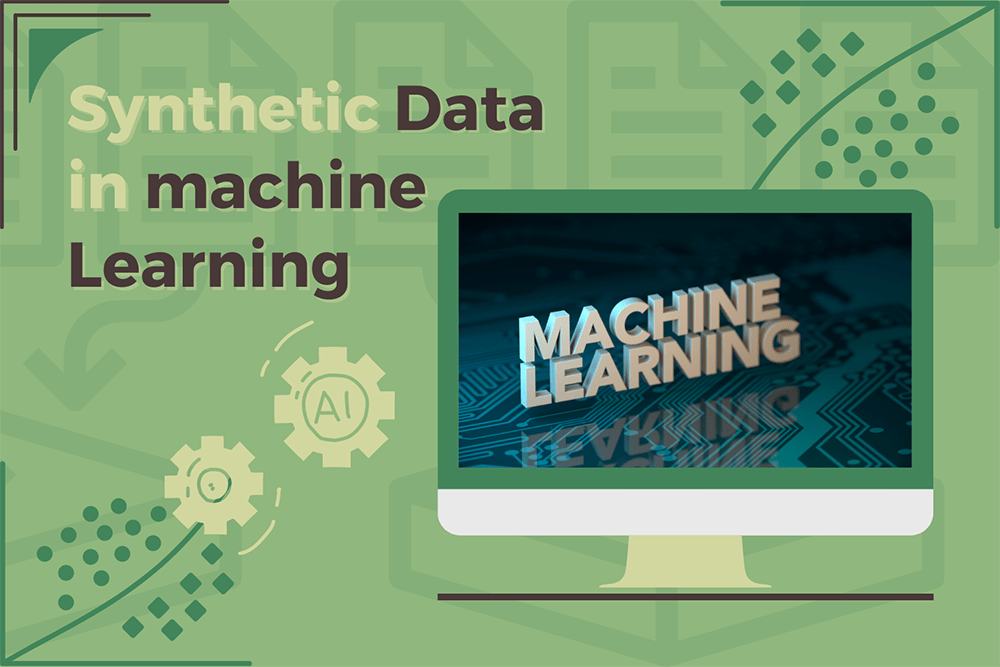One of today’s most precious resources is data. However, due to the cost, sensitivity, and processing time, obtaining real data is not always a possibility. However, synthetic data might be a useful option for training machine learning models. In this post, we will define synthetic data in machine learning.
What is Synthetic Data in Machine Learning?
Synthetic data is generated data that is used to train machine learning models when real-world data is difficult or expensive to get. Synthetic data is distinct from enhanced and randomly generated data. Let’s look at a very simplistic example of human face synthesis to see how synthetic data differs from the other ways. Assume we have a collection of photographs of actual individuals.
Within the machine learning sector, synthetic data is gaining interest. Machine learning algorithms are taught using massive amounts of data, and gathering the required quantity of labelled training data might be prohibitively expensive.
Companies and researchers can use synthetically created data to establish data repositories needed to train and even pre-train machine learning models, a process known as transfer learning.
There are now research projects underway to advance the use of synthetic data in machine learning. Members of the MIT Laboratory for Information and Decision Systems’ Data to AI Lab, for example, revealed recent breakthroughs with its Synthetic Data Vault, which can develop machine learning models to autonomously produce and extract its own synthetic data.
Companies are also experimenting with synthetic data approaches. For example, a Deloitte LLC team created an accurate model by artificially creating 80% of the training data while utilizing actual data as seed data. Additional applications that profit from the use of synthetic data include computer vision, image recognition, and robotics.
How synthetic data can help ML and AI?
Synthetic data gives up new opportunities for AI initiatives that employ machine learning methods.
Synthetic data reduces time to data
Despite the fact that businesses handle hundreds of thousands of data points, they still confront data access issues. Long access processes for rare illness data gathering may be encountered by healthcare organisations. Accessing data concerning fraudulent transactions may be difficult for a financial institution.
By dramatically lowering the time required to obtain data, synthetic data can help to overcome the data access problem. In contrast to sensitive datasets, appropriately anonymized synthetic data does not require the lengthy access request procedure.
Your data science team may quickly obtain a dataset that was artificially manufactured from an original dataset. They will be able to comprehend the statistical patterns in this data and validate its significance for use in ML models.
You may also combine fake data to increase your sample size. You can, for example, establish a simulated data lake for investigation. Your data science team will be able to filter out data for a certain use case with greater ease.
Synthetic data can help to improve data quality
Data science teams frequently spend time cleansing data before utilizing it to power machine learning algorithms. This time-consuming process is critical to the AI project’s success. Poor quality or biased data will have a detrimental influence on Machine Learning results.
The production of synthetic data can aid in the automation of the data cleansing process. For example, differentially-private synthetic data suppresses outliers, which aids in bias reduction and training data quality improvement.
As a consequence, appropriately created synthetic data can improve the quality of the actual data and help your AI project succeed. Synthetic data is likewise ready to use, so there is no need to clean or format it.
With synthetic data, you can remove privacy limitations
It takes months to go through compliance verification processes in order to open up real-world data or obtain secondary approval to use it for Machine Learning. In many circumstances, either consent is not obtained or the de-identified data quality is insufficient to support a successful ML application.
Creating synthetic data with the appropriate privacy protections can help to speed up the compliance procedure. Because privacy-preserving synthetic data does not contain real-world data or sensitive personal data, the legal limitations around data processing are substantially less. For example, you do not need to get secondary consent to utilize anonymized synthetic data in a new machine learning project.
Using synthetic data also protects your clients’ privacy, exposing them to less danger. As a consequence, you may experiment on a synthetic dataset, test alternative machine learning models, examine what works and what doesn’t, and handle the data without fear of violating privacy laws.
Finally, employing synthetic data opens up new avenues for collaboration and establishes a new foundation for the success of the ML project. You can work with a third party, for example, to utilize synthetic data in a Proof Of Concept (POC) and test it before deploying it on a large scale.


